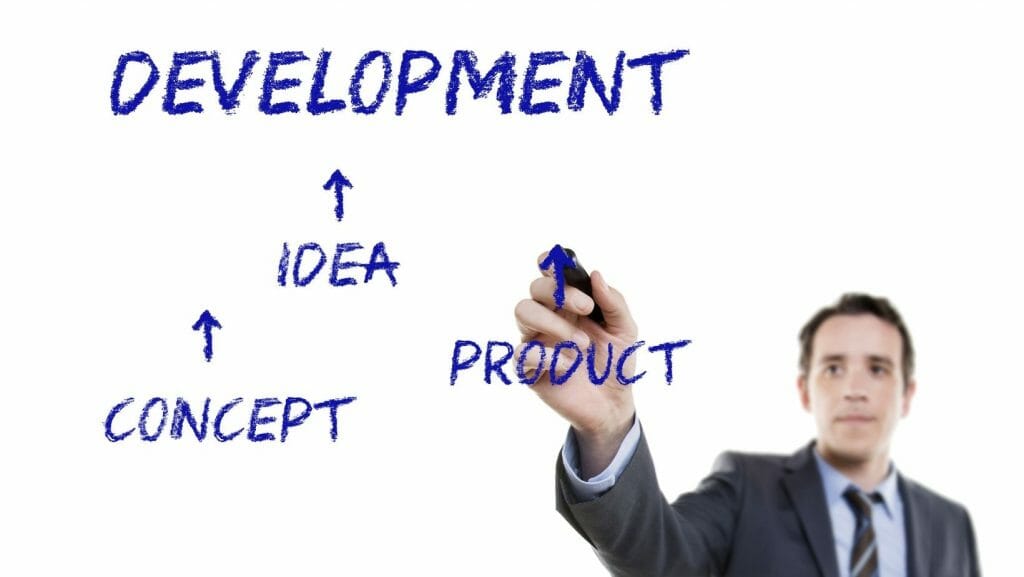2021 is a critical year for your organization’s talent management practice, so why not focus on behaviors that will increase employee engagement and enable more profitable exit points?
Following are five education and coaching strategies that will help you improve company productivity, retain and energize employees, and ensure they stay well-positioned to pursue new opportunities. If you want to get the best out of your employees, you need to give them the opportunity to develop their skills. That’s why it’s important to develop talent every year.
Below are 5 strategies to implement this year to support talent development and peak performance.Talent development is an important part of any successful business. But how do you build up the right talent? What makes the best leaders, the best employees, the best salespeople, and the best teams? What are the best practices you can emulate in your own company? How can you build on your personal qualities to develop your business? Sir Richard Branson, renowned British entrepreneur and philanthropist, founder of the Virgin Group, is known for his many sayings about business, success and life, which he shares in his books, speeches and presentations.
However, there is a quote from him that many organizations and leaders take to heart: The customer does not come first. Employees come first. If you take care of your employees, they will take care of your customers. This quote perfectly illustrates how important it is to take care of your employees. They are your most important asset and can make the difference between the success or failure of your business. As an asset, you can increase the value of your employees by investing in them. And that’s where implementing the right talent development strategies can help. Talent development is about leveraging employees’ strengths and abilities to help them become stronger and grow within the company. With the right talent development services and strategies, you can shape your people to meet your business goals and plans. This will not only give you skilled and reliable employees, but it will also make it easier for you to retain them. In addition, your talent development programs will help you attract more qualified candidates to your team. All of this will help you run a more successful business in 2021 and beyond.

Strategies for employee development
To make a talent development program work, you need to have the right strategies in place and know how to implement them properly in your organization. Here are five best strategies and practices to help you create a successful talent development program:
1. Establish program objectives that align with your organization’s goals.
Talent development programs are designed to meet the needs of your employees, enable them to acquire new skills and develop them into future leaders. While this is the most important goal, it is also important to keep your business goals in mind. Therefore, when setting goals for talent development programs, align them with your organization’s mission and goals. Consider your business objectives when setting program goals. Develop a clear vision of your company’s future and map out a path that takes your employees from one level to the next, working toward your business goals. Aligning corporate goals and program objectives will also help you expand your corporate culture efforts.
2. Emphasis on the development of basic skills and competencies.
Addressing and closing the skills gap is a 2021 goal for many companies. This is a strategy that will also benefit you in your business. Look for opportunities that will allow your employees to develop the strengths and skills that will help them anticipate and survive changes in their jobs. Ensuring that these opportunities allow them to achieve their personal and professional goals. Emotional and cultural intelligence, cognitive flexibility and self-control are among the most important skills you need to teach your employees this year. These skills focus on analytical thinking, innovation, adaptability and communication skills. By enabling your employees to develop these important skills and competencies, you not only increase their productivity and efficiency, but also promote a culture of flexibility in your workplace.
Proficiency in collaboration and communication tools is essential for teamwork and productivity. Employees should be familiar with platforms such as project management software, instant messaging tools, video conferencing software, and document collaboration tools. These competencies allow for seamless communication, file sharing, and real-time team collaboration.
With the increasing availability of data, employees who can analyze and interpret data are highly valuable. Data analysis skills are crucial for identifying trends and extracting valuable insights from large datasets.
Of course, employees must understand cybersecurity risks and best practices. The latter includes using strong passwords, recognizing phishing attempts, and practicing data protection. With a cybersecurity-conscious workforce, businesses can reduce the risk of data breaches and maintain productivity without interruptions.
3. Blended coaching and training opportunities.
Career coaching and employee training are two strategies that help employees develop the skills, competencies and confidence they need to achieve their career goals. In today’s world, most employees do not have the opportunity to attend in-person events or meet regularly with career coaches. Therefore, providing them with training and learning opportunities, both virtual and through physical training, should be considered. The introduction of coaching and development programs offered in virtual classrooms or via video conferencing makes it easier for employees to access these programs. The flexibility offered by such an approach may encourage workers to make use of it. However, there are also significant development opportunities in the office. By inviting a trainer into your workplace for activities that can complement virtual meetings or sessions, you can accelerate the progress and success of your training programs. Giving your employees the chance to lead projects, take on other roles or responsibilities, lead meetings, collaborate or mentor is also an effective strategy for developing talent in the office.

4. Prioritise well-being in the workplace.
Whether you manage a physical workplace or a remote workplace, or both, the current pandemic is still affecting various aspects of work and life. In particular, the lack of personal communication with colleagues affects the productivity and performance of many employees and leads to burnout. Even when in the office physical distance and crowd control are still recommended practices, social interaction remains limited. Provide your employees with adequate resources for wellness at work as part of this year’s talent development program. This includes hosting virtual coffee shops and providing employees with flexible, accessible and useful programs and resources to maintain their health and well-being. Companies that develop customized wellness programs that help employees make meaningful connections outside of work are more likely to have healthier, happier employees who will stay with your company for years.
As some firms are going hybrid, this point can’t hurt to be reiterated: the workplace environment can also affect performance. For instance, a well-thought out conference room design can have a positive impact on how sessions can be conducted. After all, these serve as dedicated spaces for a variety of functions. Therefore, it should allow for flexibility in arranging furniture to accommodate different activities, such as lectures, workshops, or group discussions.
Providing ergonomic furniture, outfitting the space with the latest equipment, and using adequate soundproofing are also crucial. Consider what elements you need to improve, add, or replace to create the ideal working environment.
5. Measurement and evaluation of results.
Evaluating the effectiveness of the learning experiences you provide is also critical to a successful talent development program. To ensure that your talent development program is on track, measure and evaluate all development activities on a regular basis.
You can proceed as follows:
- Ask for feedback or reactions from the participants. This includes asking whether they find the learning opportunity useful, relevant and interesting.
- Conduct a training check to determine if participants have acquired the knowledge, skills, and attitudes that your program aims to teach.
- Take into account the behaviour of your employees during and after each training course by considering how the participants can apply what they have learned at work.
- Evaluation of the achievement of the expected results.
By collecting and analyzing qualitative and quantitative data about your talent development program, you can get a clearer picture of your return on investment. In addition to participant feedback, you will need to use more formal evaluation tools, such as. B. pre- and post-assessment of their own and their supervisor’s competencies, assessment of training needs, assessment of programme approval and assessment of knowledge transfer. Data on recruitment and retention can also give you a clear indication of the effectiveness of your talent development program. Talent development programs help retain and motivate employees. They also contribute to providing them with better and wider career opportunities. After all, they enable you to retain the best professionals for longer. These benefits are a good reason to pay attention to talent development programs in your company this year.

Frequently Asked Questions
What are talent development strategies?
We work at all levels to build the talent of our employees in order to become better leaders. There are several different ways to achieve that goal. “Talent development” is a phrase that has been bandied about in the business world for a long time, with varying definitions and varying effects. Some boss simply want employees to be the best they can be, but most companies have taken a more nuanced approach and opted for a more targeted approach. This is a good thing – it’s one thing to aim for a vague goal of ‘doing the best work I can’ and it’s another to aim for something more specific, like ‘doing the best work I can in a specific area’ or ‘doing the best work I can in a year’. But how does one go about pinpointing what these things are?
What are the talent management strategies?
Talent management is a complex area, with no one-size-fits-all solution. Instead, it’s about making sure you’re able to find, select, and retain the right talent, and that you’re able to make good use of its skills and experience. It’s also about knowing what you’re looking for, and getting it right the first time. There is a “talent shortage” in business, and a talent shortage within your organization creates a risk of talent churn, which reduces performance, effectiveness and results. It is critical for organizations to develop and differentiate their talent from their competitors and to be more proactive in attracting high-level talent and retaining their employees. There are also a number of new trends, tools and technologies that are impacting the talent management of the organization.
How do you develop a talent development plan?
No matter how creative and skilled your employees are, there is always more you can do to help them reach their full potential. So, how do you go about developing talent? Here are five strategies you can use to nurture and maximize potential. Have you ever wondered how you can develop a talent development plan to help you reach your goals? If you’re like most people, you might be thinking, “Where do I even begin?” or “How can I develop a talent plan when I don’t know what my goals are?” Before you start your talent development plan, create a vision. First and foremost, you need to have a clear picture of the future that you want to achieve. What do you want your life to look like after you achieve your goals? What kind of person do you want to be? What can you do to make this happen?
Interesting articles on this topic: How to make your employees more productive. Here is the thing: many of us have this line in the sand when it comes to our budgets. We want to spend wisely, but are so afraid to do so. Instead of throwing money at a problem, let’s focus spending on the most important areas for our businesses.. Read more about talent development examples and let us know what you think.


